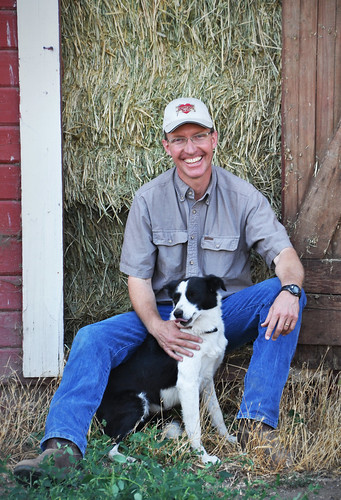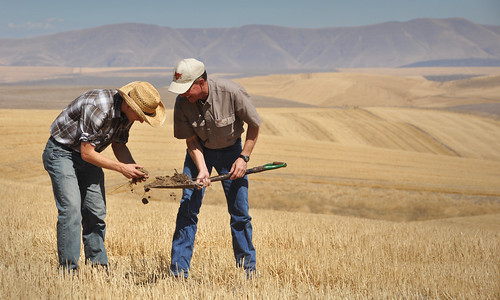
Without irrigation, it’s hard to imagine growing a cash crop in an environment that receives less than 12 inches of precipitation annually. Welcome to the world of grain farmers in central and eastern Oregon.
David Brewer is one of those farmers. But rather than looking to the sky for help, he’s looking to the soil — improving its health in an effort to retain and preserve every drop of precipitation that happens to fall on his farm.
Brewer is a fifth-generation farmer who manages the Emerson Dell Farm, which was founded in 1883, and now includes more than 2,000 acres of cropland and 800 acres of pasture — just southeast of The Dalles, Oregon.
Brewer said his family has always had a progressive conservation ethic. They were early adopters of innovative conservation practices, but when he returned from a cover crop and soil health trip to the Dakotas in the 1990s, some of his fellow conservation-minded dry land farmers were skeptical.
“They teased us about it, but it really was an encouragement and inspiration,” he said.
Brewer said that despite operating in different precipitation zones and cropping systems, the lessons he learned in the Dakotas were all focused on feeding the soil and letting the soil take care of his crops. “I think if it works for them it ought to work here as well,” he said. “It may look different but that same focus on soil health ought to work for us.”
“We’ve already seen by thinking outside the box a little bit and putting our crops in different orders, including putting some diversity in our crop rotation, we are raising better crops, bigger crops,” he said.
Brewer’s enthusiasm and optimism notwithstanding, establishing cover crops after harvesting a cash crop — and after receiving all but an inch or two of precipitation for the growing year — is about as challenging as any agronomic problem a farmer can face.
The need to capture and preserve moisture was one of the leading drivers behind the widespread adoption of a key conservation practice in his area, direct-seeding, despite the fact that many farmers didn’t believe direct seeding would work there.
Direct seeding is a low-tillage practice in which seeds are planted directly into an uncultivated field. The process allows residue from the previous crop to remain intact over the winter and fallow period, which helps retain additional moisture and improves soil health.
“I think there is more incentive to do direct-seeding in a low rainfall environment because you just don’t have the water to give away and certainly in this case we don’t have the soil to give away,” he said. “I think in terms of low rainfall there is just as much to gain from a productivity standpoint by keeping that soil undisturbed and the residue on top of the soil.”
USDA’s Natural Resources Conservation Service (NRCS) prescribes many of the conservation practices that Brewer uses on his farm. NRCS provided Brewer with technical and financial assistance to implement a variety of these practices on the land.
Moreover, Brewer believes in the power of innovation and tenacity. As a recipient of a Conservation Innovation Grant from NRCS, he is exploring what crop rotations work best locally.
“I think as long as we keep focused on doing the right thing for the soil, for the land, then it will all come out in the end,” Brewer said. “I guess there’s a bit of faith there, but we have had a number of points where we have had to take a leap of faith—and it has worked for us.”



